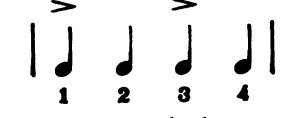Submitted by: Jeremy Nelson PT
9.0 Pick Up Object From Floor From a Standing Position
Although 9th on the list of tests in the Berg, when examining this component for complexity it is near the top of difficulty. The goal of this component is to be “able to pick up slipper safely and easily”. How the performer completes this goal can be divided into a number of possible strategies; one that is a symmetrical stance involving a full hip hinge or squat, or an asymmetrical stance involving a modified split squat and finally as a single limb golfers lift. As a result, this component allows us to not only learn something about the current control the center of gravity in a changing base of support but also lets us know the preference for movement.
Strategies that the performer demonstrates in order to accomplish the task identifies which BOS they are most comfortable. The split squat pattern in which the person squats down to pick up the object from near the feet provides information about the asymmetrical BOS. The golfers lift in which the performer goes into a single limb to pick up the object implies a higher degree of neuromuscular development. This will be useful in organizing the change effort to come as well as knowing where on the hierarchies of critical tasks to begin and progress.
When the performer is “unable to try/needs assist to keep from losing balance or falling” there exists a profound inadequate control of the COG. This shouldn’t be a surprise at this point in the testing as the prior test components would have provided evidence the level of complexity demonstrated in this component would be unattainable. As discussed in the prior articles, this score indicates that there is work to be done in the prior supporting levels. Basic critical tasks are absent and the body segments utilized to complete these critical tasks are inadequate in more than one way.
When the performer is “Unable to pick up and needs supervision while trying” it is worth noting which base of support strategy was employed. A change effort to improve the performance in this component would most likely start in the base of support that is presented. Symmetrical base of support using the hip hinge would return to the prior functional reach critical tasks. An asymmetrical base of support could include the split squat as an entry point. And if the performer presents the golfers lift, the stance phase of ambulation would be a good entry point to consider. A problem solving approach, without considering how something is moving and seeing this simply as lack of lower extremity strength will be unlikely to succeed. There is simply to many data points that are related to consider one solution as adequate.
As the performer demonstrates “unable to pick up but reaches 2-5 cm(1-2 inches) from slipper and keeps balance independently” an adequate control of the COG over the preferred BOS can be implied. At least to the point of near the ground. The question here is whether the inability to reach the ground is due to mobility, inadequate flexibility of the body segment, or inadequate stability to attain the control required reaching the ground and return. The human brain is very good at knowing its limits and not getting caught into a position it can’t get out of. What at first looks like inadequate flexibility of tissue to attain a position could also be neurological based muscle guarding as the edges of coordinated movement are reached.
To investigate the questions, the first place to start is to return to the critical tasks of each base of support and investigate what level of flexibility and mobility exist. The seated hip hinge with reaching to the ground demonstrates adequate flexibility if all body segments perform as expected. As the base of support narrows and the complexity of the movement increases, the investigation turns to dynamic stability. The golfers lift is a complex movement that more likely indicates control of the COG to complete the task then flexibility. Further control would be demonstrated by “able to pick up slipper but needs supervision”.
By including the BOS as a data point when observing this component, further progressions or regressions can be organized. As the performer attains the goal in a symmetrical stance, move to the asymmetrical stance to complete the picking up of the object. Having attained the goal in the asymmetrical BOS, the single limb BOS is available. In this way the patient is provided a wide range of demands to learn from, resulting is greater preparation for the demands of the real world.
